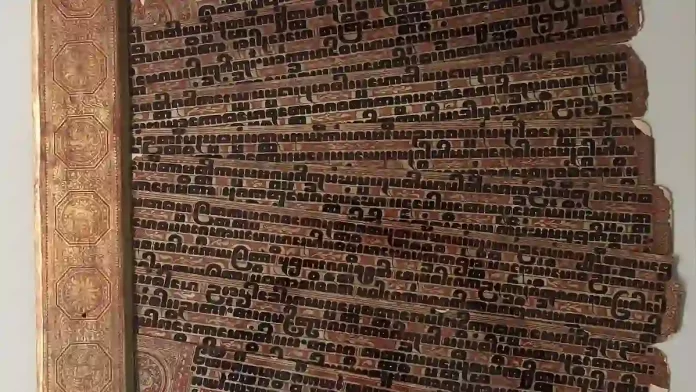Across India, six languages bask in the coveted title of “Classical”: Tamil, Sanskrit, Kannada, Telugu, Malayalam, and Odiya. Each boasts a rich history, a distinct literary heritage, and the official validation of their ancient roots.
Yet, within the tapestry of India’s linguistic wealth, two voices remain eerily muted: Pali and Prakrit. Why, despite their undeniable influence and historical significance, have these languages been denied the “classical” mantle?
The Elusive Criteria
India’s definition of a “classical” language, established in 2004, hinges on four main criteria: a documented history exceeding 1500-2000 years, high antiquity and originality, a substantial body of high-quality literature, and a distinct grammatical structure.
Both Pali and Prakrit seemingly tick these boxes. Pali, the language of Theravada Buddhism,emerged alongside Sanskrit around 300 BCE, boasting a vast corpus of philosophical, religious, and historical texts like the Tipitaka, considered the foundational scriptures of Buddhism.
Prakrit, a diverse family of languages prevalent across ancient India, predates Sanskrit and served as the common tongue of the masses, enriching literature with vibrant epics and dramas like Ashokavadana and Mricchakatika.
So, if their pedigree is unquestionable, what hurdles have kept them off the “classical” pedestal?
The Politics of Recognition
A significant factor is the power of political advocacy. Unlike their formally enshrined counterparts, Pali and Prakrit lack a unified voice.
Tamil, Malayalam, Kannada, and Telugu each enjoyed strong regional backing, with state governments actively lobbying for their recognition.
Odiya, though facing initial resistance, eventually benefited from sustained political pressure. But Pali and Prakrit, spoken by geographically dispersed communities and devoid of dedicated state patronage, struggle to make their case heard in the noisy corridors of power.
Furthermore, the “classical” status debate isn’t immune to regional and linguistic rivalries.
Some argue that granting “classical” status to Pali, with its Buddhist associations, weakens Sanskrit’s claim as the sole ancient Indian language of intellectual and religious prowess.
Additionally, considering Prakrit’s diversity, agreeing on a single standardized version for recognition presents a complex challenge.
Beyond the Label
However, focusing solely on the “classical” tag risks obscuring the deeper value of Pali and Prakrit.
These languages offer a unique window into India’s diverse cultural landscape, providing invaluable insights into social life, religious practices, and everyday experiences of the common people.
Pali’s influence on Southeast Asian cultures and Prakrit’s role in shaping regional languages like Marathi and Bengali underscore their enduring legacy.
The Unheard Voices
Denying Pali and Prakrit the “classical” label has practical consequences. Limited funding hinders research and scholarship, jeopardizing the preservation of these languages’ rich literary heritage. The lack of official recognition also discourages wider study and appreciation, leaving their treasures inaccessible to many.
Moving forward, advocating for Pali and Prakrit’s recognition goes beyond mere label-chasing. It’s about reclaiming lost voices, enriching India’s cultural understanding, and ensuring the legacy of these languages not simply survives but thrives.
Recognizing their “classical” status isn’t merely a gesture of historical validation; it’s a vital step towards ensuring future generations inherit a more complete and vibrant picture of India’s linguistic tapestry.
Possible Solutions
Several paths could lead to a brighter future for Pali and Prakrit. Establishing dedicated academic institutions and promoting scholarships focused on these languages is crucial.
Collaboration between national and regional bodies could streamline the process of standardization and facilitate wider access to texts and research.
Moreover, incorporating these languages into education systems, even at introductory levels, would foster awareness and appreciation among younger generations.
Ultimately, granting Pali and Prakrit the “classical” tag should not be seen as a victory for just two languages but as a celebration of India’s rich linguistic heritage in its entirety.
It’s an opportunity to acknowledge the silenced voices, engage with a broader cultural spectrum, and ensure that future generations inherit a legacy not just preserved but actively vibrant.
The time has come to listen to the whispers of Pali and Prakrit, for their stories deserve to be heard.
